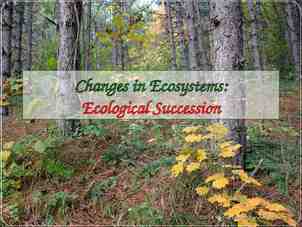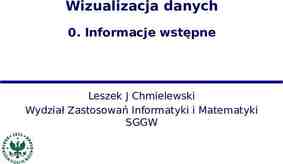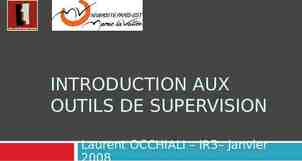Unit 1: Introduction to Forensic Science
51 Slides4.17 MB
Unit 1: Introduction to Forensic Science https://www.youtube.com/watch?v qESpv6bqBuU https://www.youtube.com/watch? v 3vvRxdRrJlQ&index 4&list PL89QP7ZwONKkbrx 4l0
Learning Targets I can explain The growth and development of forensic science through history How a crime lab works Basic types of law in the criminal justice system The importance of Federal rules of evidence, including the Frye standard and the Daubert ruling I can describe: how the scientific method is used to solve forensic problems different jobs of forensic scientists and the experts they consult. 2
Central Focus Students can explain the history of forensic science techniques and how the law influences evidence collection and analysis. Students can explain and justify the types of evidence that are analyzed by specific units within a criminal department. 3
Georgia Standard SFS1. Students will recognize and classify various types of evidence in relation to the definition and scope of Forensic Science. a. Compare and contrast the history of scientific forensic techniques used in collecting and submitting evidence for admissibility in court (e.g. Locard’s Exchange Principle, Frye standard, Daubert ruling). 4
Day 1: Essential Questions What is forensic science? What impact has forensic science had on the scope of forensics? How does forensic science differ in reality from what is portrayed in popular media? 5
Forensic Science The study and application of science to matters of law. Provide timely, accurate, and thorough information to the criminal justice system. 6
Criminalistics vs Criminology the scientific examination of physical evidence for legal purposes. AKA: Forensic Science the psychological angle studying the crime scene for motive, traits, and behavior that will help to interpret the evidence 7
Scientific Method in Forensics Observe a problem or questioned evidence and collect objective data. Consider a hypothesis or possible solution. Examine, test, and analyze the evidence. Formulate a theory based on evaluation of the significance of the evidence (basis for reconstruction) 8
Skills of a Forensic Scientist Observant – Step one of the Scientific Method! Logical Thinking – It is important to be able to think through the evidence logically to reach a conclusion. – Use complex reasoning skills 9
Complex Reasoning Skills Necessary to Work Through and Solve Crimes: Deductive and Inductive Reasoning Classifying Comparing and Contrasting Problem Solving Analyzing Perspectives Constructing Support Error Analysis 10
Skills of a Forensic Scientist Not Squeamish – The ability to be around dead people is a must. – Can't be reluctant to dig through garbage or dirty laundry. 11
Disclaimer Due to the graphic nature of violent crime, you may be exposed to some gruesome images and topics, either real or re-created. I expect you have a mature, scientific attitude about everything presented in the course. 12
Skills of a Forensic Scientist Organized and time efficient – There is never just one case to handle; may handle 10-40 cases at a time depending on size of department and case load. 13
Skills of a Forensic Scientist Speak to the People – Being able to explain evidence to a jury in plain language is very important. 14
Skills of a Forensic Scientist Academic – usually has a degree in mathematics, one of the sciences, or sometimes both. 15
Skills of a Forensic Scientist Teach Others – teach the police and people collecting/handling evidence at a crime scene how to do it properly. Working With Others – Being a team player is a necessary skill. – will likely have assistants and work with law enforcement officers to build a case. 16
Day 2: Essential Question How has forensic science evolved with technology and scientific research over the course of history? 18
Forensic Science- History Yi Yu Ji (China 3rd Century) Earliest record of Forensic Science Manuscript title NOT a person!!! Woman suspected of murdering husband and burning the body Her claim: he died in a fire Coroner used science to solve the mystery 1 pig burned alive 1 pig burned already dead Examined presence of ash in the lungs 19
People to know Mathieu Orfila Spanish born but worked in France “Father of Forensic Toxicology” (1814) published a Treatise on the detection of poisons William Herschel (1856) – Used thumbprints on documents to identify workers in India 20
People to know Alphonse Bertillion French Scientist “Father of Criminal Identification” (1879) devised first system of person ID using a series of body measurements Devised the first crime scene kit –still used today 21
Anthropometry The Bertillion system used anthropometry a detailed description and measurement of the subject. Eleven measurements were used to distinguish individuals. These included height, reach, width of head, and length of foot, etc. 22
Figure 1–3 Bertillon’s system of bodily measurements as used for the identification of an individual. Courtesy Sirchie Finger Print Laboratories, Inc., Youngsville, N.C., www.sirchie.com 23
Day 3: Essential Question How has forensic science evolved with technology and scientific research over the course of history? 25
When Anthropometry failed Will West, a prisoner, was brought to the Leavenworth Federal Prison in 1903 and had his measurements taken. His measurements matched a prisoner already in the prison named William West. 26
The down fall of Anthropometry Despite the system there was no way to tell the two apart. The only noticeable difference between the two men was their fingerprints. Anthropometry was abandoned and eventually the fingerprint (Henry-Galton) system was adopted. 27
People to know Henry Faulds (1880) – Used fingerprints to eliminate an innocent burglary suspect 28
People to know – Sir Arthur Conan Doyle wrote Sherlock Holmes stories Sherlock Holmes used trace evidence* to test theories conceived by the police **such as shoe and tire impressions, fingerprints, ballistics and handwriting analysis All of the techniques advocated by Holmes later became reality (were generally in their infancy at the time Conan Doyle was writing) 29
People to know: Sir Conan Doyle – Holmes frequently complained of the way the crime scene had been contaminated by others, especially by the police emphasized the now well-known critical importance of maintaining crime scene integrity 30
People to know Francis Galton – British Scientist. – (1892) published the book “Finger Prints” 1st statistical proof supporting the uniqueness of fingerprints. – Laid the foundation of modern fingerprints. Hans Gross – Lawyer and Judge in Austria – (1893) Published the first paper on applying science to criminal investigation – Started the forensic journal “Kriminologie” 31
People to know Karl Landsteiner – (1901) Discovered human ABO blood groups – 1930 Won Nobel Prize – 1940 helped to discover the Rh factor in human blood Albert Osborn – American Scientist. – (1910) published the book “Questioned Documents.” – The book became a primary reference for document examiners. 31
People to know Edmond Locard – (1910) Founder/Director of the Institute of Criminalistics at the University of Lyons – Formulated “Locard’s Exchange Principle” . "It is impossible for a criminal to act, especially considering the intensity of a crime, without leaving traces of his presence.” 33
Locard’s Exchange Principle When a criminal contacts an object or person, a crosstransfer of evidence occurs – Something is removed or added to the crime scene by the criminal. – The exchange links the criminal to the crime scene this principle is the foundation of the study of “trace evidence”. Trace Evidence: “any type of evidence occurring in sizes so small that it can be transferred or exchanged between two surfaces without being noticed” 34
Locard Influenced by Sherlock In the 1904 story "The Adventure of Black Peter," after a student reports a lack of footprints at a crime scene, Holmes responds: – "As long as the criminal remains upon two legs so long must there be some indentation, some abrasion, some trifling displacement which can be detected by the scientific researcher" 35
People to know Leone Lattes (1915) devised a procedure by which dried bloodstains could be grouped as A, B, AB or O procedure used today by some forensic scientists Calvin Goddard (1925) Described the use of the comparison microscope regarding firearms investigations. credited with the conception of the term "forensic ballistics” In 1925 Established The Bureau of Forensic Ballistics, United States’ first independent criminological laboratory 35
People to know Sir Alex Jeffreys – geneticist from the University of Leicester in Great Britain – Studied heredity disease in families – Determined you could use DNA to identify a person – First DNA fingerprinting - 1984 37
Day 4: Essential Questions How do the different disciplines used in forensic science help solve an investigation? What divisions within a crime lab are responsible for the evidence? How has the advent of forensic science impacted how law enforcement investigates crimes? 39
Crime Laboratories Special facilities specifically dedicated to forensic analysis for criminal cases USA does not have a national system of crime labs (state/local level) 40
Crime Lab History 1910: first police crime lab in the world was established in France by Edmond Locard 1923: first police crime lab in the U.S. opened in Los Angeles 1929: The Scientific Crime Detection Lab was founded in Evanston, Illinois 1932: The first FBI crime lab opened 41
Major Crime Laboratories Federal Bureau of Investigation (FBI) largest crime laboratory in the world through the Department of Justice. FBI processes 14,000 samples/month Drug Enforcement Agency (DEA) drug analysis of seized drugs operates a lab for the Department of Justice that work mainly on drug-related crimes. 42
FBI has the largest crime lab in the world. FBI Headquarters is in Washington, D.C., but there are 56 field offices located in major cities throughout the U.S., 381 smaller offices across the nation, and more than 78 international offices called “legal attachés” in U.S. embassies worldwide.
Major Crime Laboratories Bureau of Alcohol, Tobacco, Firearms, and Explosives (ATF) runs a crime lab for the Department of the Justice that deals with alcohol, weapons, explosives, and organized crime. U.S. Postal Service-own lab that specializes in crimes involving the mail. U.S. Fish and Wildlife Service-maintain a forensic laboratory – crimes against wildlife. 44
Major Crime Laboratories US Immigration and Customs Enforcement – works with Department of Homeland Security Department of the Treasury- IRS, questioned documents http://www.ice.gov/hsi-fl 45
Crime Scene Team A group of professional investigators, each trained in a variety of special disciplines. Team Members First Police Officer on the scene Medics (if necessary) Investigator(s) Medical Examiner or Representative (if necessary) Photographer and/or Field Evidence Technician Lab Experts pathologist serologist DNA expert toxicologist forensic odontologist forensic anthropologist forensic psychologist forensic entomologist firearm examiner bomb and arson expert document and handwriting experts fingerprint expert 46
Crime Lab Units- Basic Services Physical Science Unit Uses chemistry, physics, and/or geology to identify and compare physical evidence Biology Unit Investigates biologicals including: blood, body fluids, botanical (plant/wood) samples, hairs and fibers. Also includes DNA profiling. 47
Crime Lab Units- Basic Services Firearms Unit Examine firearms, casings, shells, ammo, etc as well as garments and other targets for residue. Determine distance of gun shot. Toolmark identification, lock and key examinations Questioned Document Unit Document Examination Foot prints/tire prints Plastic bags 48
Crime Lab Units- Basic Services Photography Unit Pictorially record physical evidence. Make invisible information visible to the naked eye using special techniques (digital imaging, infrared, UV, X-ray) as necessary. Also responsible for photographic display in courtroom presentations 49
Crime Lab Units- Optional Services Toxicology Unit Examines body fluids (blood, urine, eye fluid) and organs for the presence of drugs and poisons. Latent Fingerprint Unit Fingerprints that are not visible to the naked eye Polygraph Unit Lie detector test 50
Crime Lab Units- Optional Services Voiceprint Analysis Unit Attempts to tie a recorded voice to a particular suspect. Use an instrument called a sound spectrograph to make a visual graphic display called a voiceprint. Evidence Collection/Crime-scene Investigation Unit trained to collect and preserve physical evidence at the crime scene. Must follow specific procedures to maintain chain of custody. 51
Specialized Forensic Services Forensic psychiatry Defendant competency, suspect’s behavioral profiling Forensic Computer and Digital Analysis Collect information from digital devices 52
Specialized Forensic Services Forensic odontology Examine dental evidence Hard enamel outlasts tissues/organs Tooth alignment and mouth structure important for identification Forensic Engineering Accident reconstruction, causes/origins fires (arson?) and explosions Arson – purposely setting fire to a house, building or other property 53
Specialized Forensic Services Forensic pathology Determines time and manner of death Forensic Anthropology identification of persons or personal characteristics (sex, age, race, stature) based on body remains Forensic entomology Use insects to determine time of death 54
























































